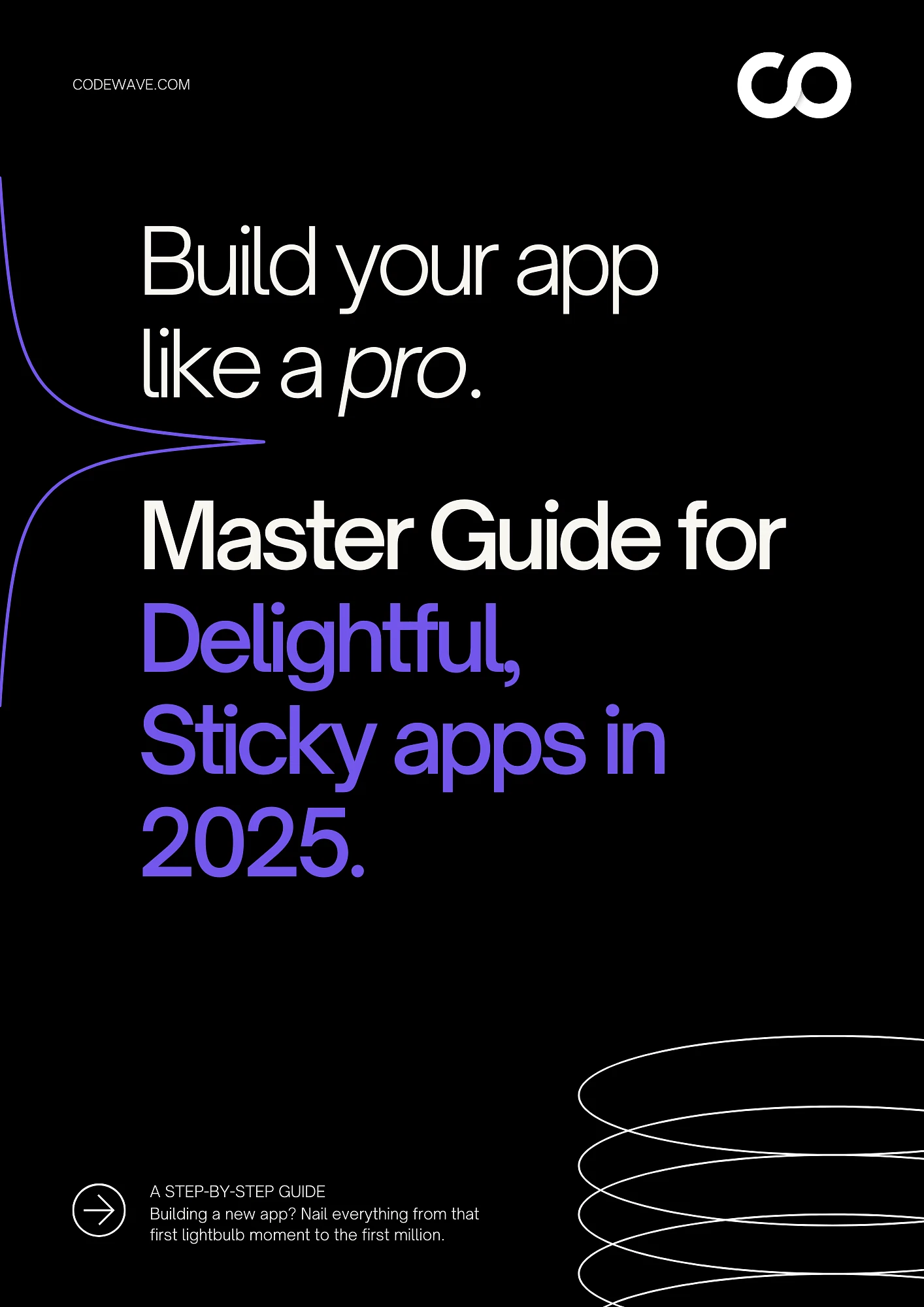Building a successful ecommerce platform is no longer just about selling products; it’s about creating an experience that keeps customers coming back. Think of how smooth it feels when you shop on sites like The Iconic or Catch; the design pulls you in, and the checkout feels effortless.
Yet many online stores in Australia still struggle with clunky layouts, slow loading pages, and checkout processes that frustrate shoppers.
With Australia’s e-commerce market revenue expected to hit nearly AUD50 billion by the end of 2025, cementing its status as the 11th largest e-commerce market globally, you can’t afford to let design flaws cost you sales.
In this article, you’ll see why UX will define success, the pitfalls to avoid, and how you can shape an online store that wins trust and drives conversions.
Key Takeaways
- The Growth of eCommerce in Australia: Australia’s eCommerce market is set to reach AUD 50 billion by 2025, driven by mobile shopping and flexible payment options like Afterpay.
- Core Elements of Design-Driven eCommerce: Mobile-first design, speed, visual clarity, accessibility, and trust signals are key to creating a successful ecommerce platform.
- How to Build a Design-Driven eCommerce Strategy: Focus on understanding your audience, optimising mobile experience, and simplifying navigation for better conversions.
- Common UX Mistakes in Australian eCommerce: Avoid slow load times, complex checkouts, poor mobile optimisation, and lack of trust signals.
- Codewave: Codewave helps businesses create seamless, user-friendly ecommerce strategies that boost engagement and drive conversions.
The Growth of eCommerce in Australia
You’re tracking the jump in online shopping in Australia, and the numbers back you up. Online retail sales are set to hit around A$58 billion in 2025, growing at a steady annual rate of 7.4 per cent over the past five years.
Even amid tighter wallets, Australians boosted online spending 12 per cent to A$69 billion, even as their average basket dropped to a decade-low of A$95.
You’ve probably seen the binge-buy holidays, the haul carts, and the browser tabs piled up with products you don’t need. That’s the push-and-pull in your head: the thrill of online choice versus the pinch of rising costs.
Shoppers in Australia aren’t just buying more online; they’re changing how they expect ecommerce platforms to perform, and that shift is reshaping the market.
- Mobile-first shopping has become the default
Australians increasingly expect ecommerce platforms to run smoothly on phones. If your site lags or checkout isn’t thumb-friendly, you risk losing them to a competitor.
- Demand for flexible payments
With Afterpay, Zip, and Klarna ingrained in the market, shoppers expect instalment options at checkout. Businesses not offering these are often left out of the decision loop.
- Convenience now outweighs brand loyalty
Faster delivery and easy returns matter more than a long-standing name. Retailers with clunky fulfilment lose customers, no matter how strong the brand history.
- Personalisation without being intrusive
Shoppers expect relevant product suggestions, but they also value privacy. Striking that balance is becoming a deciding factor in repeat purchases.
- Sustainability expectations
Packaging waste and delivery emissions are now part of buying decisions. Retailers who fail to address this are losing ground, especially with younger demographics.
Struggling to enhance your ecommerce platform? Explore Codewave’s Customer Experience Design services to create seamless, engaging experiences that boost conversions and customer loyalty. Start improving your customer experience today!
As consumer habits shift, the real question becomes how your ecommerce platform can meet those demands, and that’s where design takes centre stage.
Core Elements of Design-Driven eCommerce
Great design in eCommerce isn’t about flashy visuals, it’s about function that feels effortless. When shoppers land on your ecommerce platform, every click, scroll, and checkout step shapes their decision to buy or abandon the cart.
In Australia’s crowded market, design is no longer a “nice to have,” it’s the baseline expectation.
To meet customer expectations and stay competitive, your ecommerce platform needs to focus on these core design elements that drive both engagement and conversions.
1. Mobile-first design
Mobile shopping is the future, and your ecommerce platform must cater to it. If your design isn’t optimised for mobile, you’re leaving money on the table.
- Responsive layouts: Ensure your site adjusts automatically to any screen size for seamless browsing.
- Optimised touch interactions: Large buttons, clear menus, and easily tappable links improve usability for mobile-first users.
- Quick load times: A mobile site that takes too long to load loses potential customers, especially when they’re on the go.
2. Speed & performance
Slow websites drive customers away. In today’s fast-paced environment, speed equals trust, and a faster ecommerce platform means higher conversion rates.
- Minimise page load time: Compress images and reduce the number of plugins to speed up site loading.
- Streamline checkout: A multi-step checkout process can lead to drop-offs. Make it quick, simple, and seamless.
- Utilise content delivery networks (CDNs): Distribute content efficiently across locations to reduce latency.
3. Visual hierarchy & clarity
Design should guide the user through a clear, intuitive journey that leads them straight to the purchase button. When it’s hard to find what they want, they won’t stick around.
- Strategic use of colour and contrast: Draw attention to key actions like ‘Add to Cart’ by using eye-catching, contrasting colours.
- Simple, clean design: Reduce clutter to create a clean space where important elements (like product details) stand out.
- Effective use of whitespace: Proper spacing allows for better readability and draws focus to the right places.
4. Accessibility & inclusivity
Designing for accessibility isn’t just a requirement; it’s good business. When everyone can access your platform, you maximise potential sales and build trust.
- Keyboard navigation: Ensure users can browse and checkout without a mouse, improving the experience for those with disabilities.
- Colour contrast and readability: Make text legible for those with visual impairments by maintaining high contrast between text and background.
- Multi-device compatibility: Your site should perform flawlessly across mobile, tablet, and desktop devices to reach the widest audience.
5. Trust signals
Trust is a major barrier in online shopping. Clear trust signals make all the difference in converting visitors into loyal customers.
- Secure payment options: Display trusted payment methods like PayPal, Stripe, or Apple Pay to give users peace of mind.
- Customer reviews and testimonials: Real feedback from other customers can convince hesitant buyers that they’re making the right choice.
- Transparent policies: Clear return, shipping, and privacy policies instil confidence and reduce cart abandonment.
Now that you know what makes an ecommerce platform work, let’s look into how you can implement a design-driven strategy that aligns with these core principles.
How to Build a Design-Driven eCommerce Strategy
A design-driven ecommerce strategy aligns user experience with business goals to drive conversions and growth. For instance, Kogan.com focuses on mobile-first design, fast load times, and an easy checkout process, which has helped boost customer retention and sales, showing how effective design can drive business results.
Now, let’s explore the key steps to craft a strategy that delivers similar outcomes.
1. Understand Your Audience
Knowing your customers inside and out is the foundation of any successful ecommerce strategy. Understanding their pain points, shopping habits, and preferences allows you to design with purpose.
- Conduct user research: Use surveys, focus groups, and customer interviews to gather insights directly from your target audience.
- Use data analytics: Track user behaviour on your site using tools like Google Analytics or Hotjar to see which products get the most attention and where users drop off.
- Create customer personas: Develop clear personas that represent different segments of your audience to guide your design decisions.
2. Prioritise Mobile-First Design
With the growing trend of mobile shopping, a mobile-first approach is crucial. If your platform doesn’t offer a seamless mobile experience, you risk losing a significant number of potential customers.
- Test your site across devices: Regularly test your site on multiple mobile devices and screen sizes to ensure it’s fully responsive.
- Optimise images and media: Compress large files without sacrificing quality to ensure quick load times on mobile.
- Improve touch interactions: Ensure buttons and links are large enough for easy tapping and that the navigation is easy to use with one hand.
3. Simplify the Navigation Process
Customers should find what they need with minimal effort. Over-complicated menus or confusing site architecture can drive users away before they even see your products.
- Organise content logically: Categorise products in a way that makes sense to your users. Use clear, intuitive labels for categories and subcategories.
- Add a prominent search bar: Make sure users can easily search for specific products. Include filters that refine results quickly.
- Use sticky headers: Keep your navigation menu visible as users scroll down the page, making it easy to jump between categories.
4. Enhance Visual Hierarchy
The way you organise and present content on your site affects how easily users can navigate and make decisions. Proper visual hierarchy helps guide users to what matters most.
- Use contrast effectively: Make important elements like call-to-action (CTA) buttons and product images stand out using colour contrasts or bold fonts.
- Use whitespace: Don’t overcrowd your pages. Use spacing around text and images to enhance readability and focus attention on key areas.
- Prioritise CTAs: Position primary CTAs like ‘Add to Cart’ or ‘Buy Now’ in highly visible areas. Ensure they are large and easy to click.
5. Speed is Key
Fast load times aren’t just nice to have, they’re a necessity. Slow websites lead to high bounce rates and lost sales. A fast site not only enhances user experience but improves your SEO rankings.
- Optimise images and files: Compress images and use modern formats like WebP to speed up load times without compromising quality.
- Minimise third-party scripts: Reduce the number of third-party tools (e.g. chatbots, social media widgets) that may slow down your site.
- Implement lazy loading: Use lazy loading for images and videos, so they only load when visible on the user’s screen.
6. Integrate Trust Signals
Trust is a major factor in online purchases. Displaying trust signals clearly on your site builds confidence and encourages users to complete their transactions.
- Use secure payment gateways: Display trusted payment options like PayPal, Apple Pay, or Stripe to reassure customers that their payment details are secure.
- Highlight customer reviews: Include genuine reviews or star ratings for products. Show real customer testimonials on key pages to build social proof.
- Add return and refund policies: Make your return and refund policies easily accessible, ensuring customers feel confident in their purchase.
7. Streamline the Checkout Process
The checkout process is a critical touchpoint in the customer journey. A complicated or lengthy checkout can lead to cart abandonment. Keep it simple and user-friendly.
- Offer guest checkout: Allow users to checkout without creating an account to reduce friction, but provide an option to register for future convenience.
- Minimise form fields: Only ask for essential information, name, address, and payment details. The fewer steps, the better.
- Provide multiple payment methods: Offer a range of payment options (credit/debit cards, PayPal, BNPL options like Afterpay) to cater to different preferences.
8. Ensure Accessibility
Accessibility is key for inclusivity and compliance, and it also broadens your potential customer base. A site that’s accessible to all users leads to better engagement and a stronger reputation.
- Follow WCAG guidelines: Ensure your site meets the Web Content Accessibility Guidelines (WCAG) for readability and usability.
- Add alt-text for images: This helps users with visual impairments navigate your site using screen readers.
- Ensure keyboard navigation: Ensure all website functions can be accessed using only a keyboard for users with motor disabilities.
9. Measure and Optimise Continuously
Your strategy doesn’t end with implementation. Ongoing analysis and optimisation are key to adapting to customer preferences and improving performance.
- Set up A/B testing: Regularly test different versions of landing pages, CTAs, and checkout processes to see what works best.
- Monitor analytics: Track metrics like bounce rates, conversion rates, and user behaviour to identify areas for improvement.
- Iterate based on feedback: Continuously gather user feedback through surveys or usability tests, and use this to inform future updates.
Take your ecommerce platform to the next level with a streamlined end-to-end solution that enhances user experience and boosts conversions.
Now that you know how to build a solid strategy, let’s take a look at the common UX mistakes that can derail your efforts and how to avoid them in the competitive Australian eCommerce market.
Common UX Mistakes in Australian eCommerce
Even the best design strategies can fall short if common UX mistakes are overlooked. In the competitive Australian eCommerce space, these errors can cost you sales, frustrate users, and damage your brand’s reputation.
Let’s look at the common mistakes that can drive users away and how to fix them.
1. Slow Load Times on Mobile Devices
In Australia, where mobile shopping is booming, slow-loading websites are a major turn-off. With mobile-first shoppers, even a few seconds can cost you a sale.
Fix:
- Optimise mobile images: Compress images and use formats like WebP for quicker load times without sacrificing quality.
- Implement lazy loading: Load content as the user scrolls to avoid overwhelming the browser on mobile.
- Reduce mobile redirects: Minimise unnecessary redirects to improve mobile loading speed.
2. Overcomplicated Product Pages
Cluttered or overly complex product pages can confuse users, making it harder for them to make quick purchasing decisions, especially when browsing on mobile.
Fix:
- Keep product information clear and concise: Include key details (size, material, dimensions) at the top, followed by additional specs in a dropdown or collapsible section.
- Use high-quality, multiple images: Ensure your product images are zoomable and show items from different angles.
- Highlight essential features: Use bullet points to showcase the product’s key benefits and avoid overwhelming the user with excessive text.
3. Confusing Navigation Across Categories
When your site’s navigation doesn’t match customer expectations or isn’t intuitive, users struggle to find what they’re looking for, leading to frustration and abandoned carts.
Fix:
- Simplify category structure: Stick to a clear and logical category system with a maximum of three or four top-level categories.
- Implement breadcrumb navigation: Allow users to track their steps and easily go back to previous pages or categories.
- Use predictive search: Incorporate a search bar with real-time suggestions to help users find products with minimal effort.
4. Lack of Visible Shipping and Return Information
Uncertainty around shipping fees or return policies often leads to last-minute abandonment. Customers want to know upfront about shipping times and return conditions.
Fix:
- Display key shipping details early: Clearly show shipping costs, estimated delivery times, and return policies near the product price or on the checkout page.
- Offer a “free shipping” threshold: Display a banner that informs customers how much more they need to spend to qualify for free shipping.
- Simplify return policy language: Make your return policy easily accessible and written in clear, simple terms that build customer trust.
5. Not Catering to Local Preferences
Australian shoppers have specific expectations when it comes to payment methods, delivery options, and even product offerings. A lack of these can lead to missed opportunities.
Fix:
- Offer local payment methods: Integrate popular Australian payment systems like Afterpay, ZipPay, and PayPal alongside traditional credit/debit card options.
- Adapt to Australian shipping preferences: Offer local delivery methods like Australia Post or services that align with Australian consumer expectations.
- Highlight local products: Showcase locally-sourced or Australian-made products to cater to local preferences and reinforce your business’s Australian identity.
6. Neglecting to Build Customer Trust with Social Proof
Customers need reassurance that they are making the right purchasing decisions. Lack of reviews or testimonials can make them hesitant to proceed with a purchase, especially when dealing with unfamiliar brands.
Fix:
- Incorporate customer reviews on product pages: Encourage customers to leave feedback, and display both positive and critical reviews for authenticity.
- Show case studies or client logos: Feature well-known Australian clients or partners to build credibility and trust with new customers.
- Use user-generated content: Share photos or videos from real customers using your products, showcasing them in real-world scenarios.
Struggling to optimise your UX & UI design? Explore Codewave’s expert UX & UI Design services to create intuitive, user-friendly interfaces that enhance customer engagement and satisfaction. Start transforming your user experience today!
The success of your ecommerce platform depends on more than just great products; it’s about creating a smooth, intuitive shopping experience. Start building a platform that delivers on both user experience and business goals, and watch your brand thrive.
Why Choose Codewave for Your Design-Driven Ecommerce Strategy?
When your ecommerce platform needs to stand out in Australia’s competitive market, a simple design isn’t enough. At Codewave, we craft design-driven ecommerce strategies that go beyond aesthetics. By prioritising a seamless, mobile-first experience, we turn your site into a powerful tool for boosting conversions, trust, and customer loyalty.
Curious how Codewave’s design-driven ecommerce strategies can elevate your platform? Check out our portfolio to see how we’ve helped businesses create seamless, user-friendly experiences that drive conversions and foster customer loyalty.
What You Get with Codewave’s Design-Driven Ecommerce Solutions:
- 60% Improvement in Engagement: Struggling with slow customer interactions? Our optimised designs improve user engagement and deliver faster, more efficient experiences.
- 3x Faster Implementation: Tired of long deployment times? We streamline the process, getting your design-driven strategy live quickly, cutting down delays, and increasing productivity.
- Save Up to 3 Hours Weekly: Spending too much time on repetitive tasks? Our automation solutions free up your team to focus on high-impact, customer-centric activities.
- 25% Lower Costs: Concerned about rising development costs? Codewave’s smart design and automation strategies reduce expenses while maintaining a top-tier customer experience.
Our Services Include:
- Ecommerce Strategy Consultation: We evaluate your current platform design and create a customised roadmap that aligns with your business goals, ensuring scalability and long-term growth.
- Design & Development of UX Solutions: From ideation to implementation, we design and build intuitive, AI-driven ecommerce solutions that boost engagement, conversions, and customer loyalty.
- Integration with Existing Systems: We seamlessly integrate your new ecommerce tools with your existing CRM, payment gateways, and marketing platforms for smooth, real-time data flow.
- Actionable Dashboards & Analytics: Our easy-to-use dashboards turn customer experience data into clear insights, empowering you to track performance and make informed, data-driven decisions.
Curious to see how your customer experience can truly transform? Book a session with Codewave’s experts and discover how we can turn your CX strategy into measurable results.
FAQs
Q. What are the top signs that my ecommerce platform needs a redesign?
A. If your ecommerce platform is showing signs of slow loading times, high bounce rates, or a poor mobile experience, it might be time for a redesign. Also, if users struggle with navigating the site or if your conversion rates have dropped, these are clear indicators that your design is no longer serving your business needs. An updated, user-friendly design can increase engagement and ensure your platform stays competitive.
Q. How do I know if my ecommerce platform is optimised for mobile users?
A. Mobile optimisation is crucial since more Australians shop online via smartphones than ever. To check, ensure your site is fully responsive—meaning it adapts to any screen size. Test navigation, image loading speeds, and checkout processes. If users find it difficult to complete a purchase or if the mobile version feels clunky, these are signs your ecommerce platform needs further optimisation.
Q. How can a design-driven strategy affect my ecommerce platform’s sales?
A. A design-driven strategy ensures your ecommerce platform is user-friendly, intuitive, and visually appealing, which can significantly impact sales. When customers find it easy to navigate, locate products, and complete a purchase, they’re more likely to convert. An optimised checkout process, fast loading times, and a seamless mobile experience reduce friction, leading to higher conversion rates and customer loyalty.
Q. What are some key performance indicators (KPIs) I should track for my ecommerce platform?
A. Essential KPIs for an ecommerce platform include conversion rate, average order value, cart abandonment rate, and customer lifetime value. You should also track bounce rates, page load times, and mobile traffic. These metrics help identify areas of improvement in both design and functionality, enabling you to refine user experience strategies and boost overall business performance.
Q. Can integrating AI into my ecommerce platform improve customer retention?
A. Yes, AI can play a key role in improving customer retention on your ecommerce platform. By using AI-driven recommendation systems, personalised product suggestions, and tailored email campaigns, you can create a more engaging and relevant shopping experience. AI helps anticipate customer needs and enhance their journey, increasing satisfaction and loyalty, which leads to more repeat business.
Codewave is a UX first design thinking & digital transformation services company, designing & engineering innovative mobile apps, cloud, & edge solutions.







